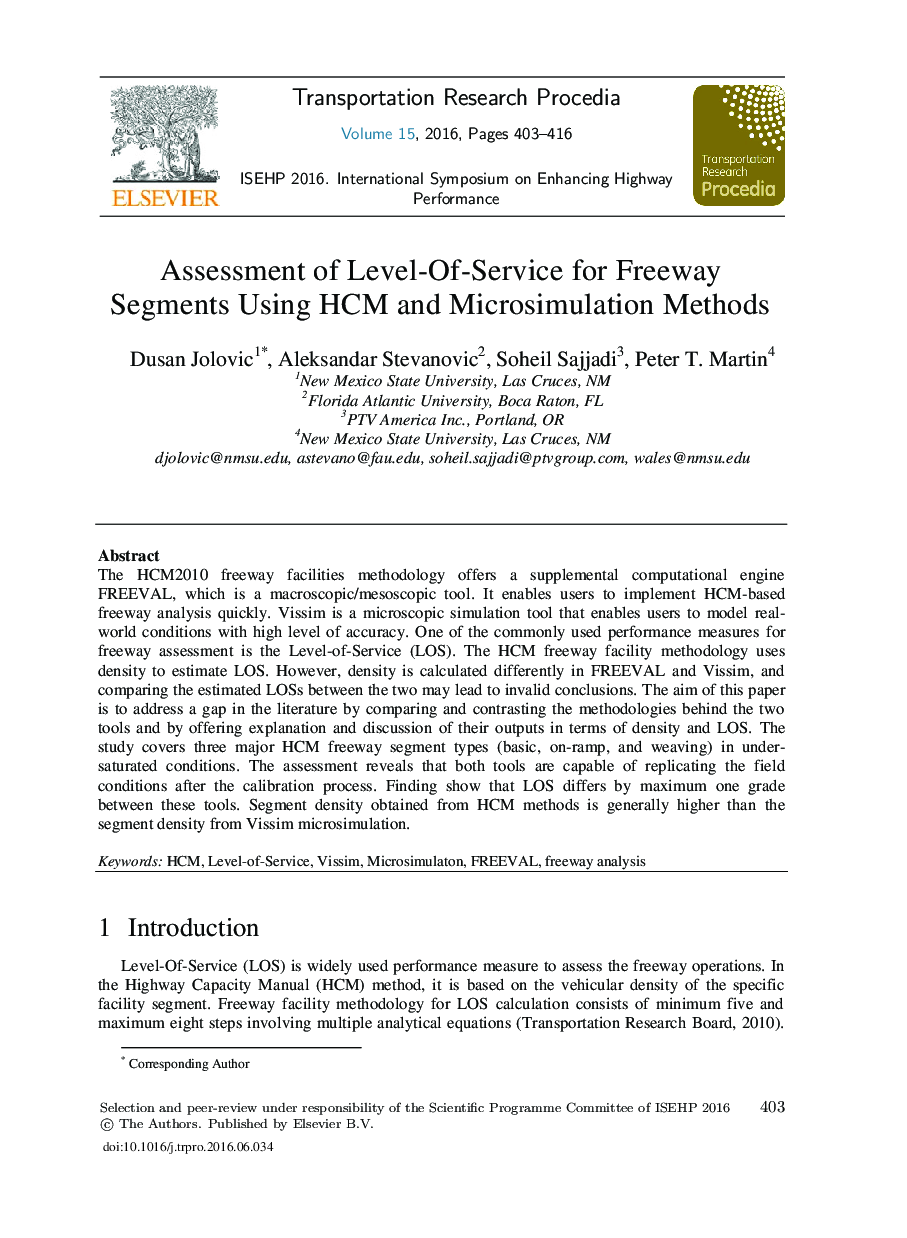| کد مقاله | کد نشریه | سال انتشار | مقاله انگلیسی | نسخه تمام متن |
|---|---|---|---|---|
| 1106125 | 1488280 | 2016 | 14 صفحه PDF | دانلود رایگان |
The Highway Capacity Manual (HCM) 2015 freeway facilities methodology offers a supplemental computational engine FREEVAL, which is a macroscopic/mesoscopic tool that enables users to implement HCM-based freeway analysis quickly and conveniently. On the other hand, Vissim is a microscopic simulation tool that enables users to model real-world conditions with high level of accuracy and comprehensiveness. Thus, the two tools represent quite opposite sides in freeway modelling – Vissim requires time-consuming preparation and calibration of the model but it usually provides benefits that are more comprehensive. FREEVAL requires less on input and calibration sides but its results may not be as beneficial as comprehensive and accurate as Vissim’s. The problem, that has not been addressed enough, is that we do not know how different their results are (when compared between themselves) and, at the same time, how close to the field conditions. Researchers and practitioners use both tools for freeway analysis and tend to compare the results directly. One of the commonly used performance measures is the Level of Service (LOS), which is used to quickly evaluate the freeway segment or facility performance. The HCM Freeway Facility Methodology uses density to estimate LOS. However, density is calculated differently in FREEVAL and Vissim, and comparing the estimated LOSs between the two may not represent a proper comparison. In essence, FREEVAL, in the under-saturated condition, estimates the density from the fundamental equations where the volume is estimated from the user entered demand and the speed is calculated using the statistical models provided in respective chapters of each segment type. On the other hand, Vissim tracks each individual vehicle as it moves along a freeway and calculates key performance measures by using individually modeled driver’s behavior. This paper aims to compare and contrast the methodologies behind the two tools and offer explanation and discussion of their outputs. The paper will cover four major HCM freeway segment types (basic, merge, diverge, and weaving) in under-saturated conditions. Field data will be acquired from a section of I-880 freeway in California. FREEVAL and Vissim models will be calibrated and validated using Mobile Century Data provided by University of California at Berkley and Caltrans Performance Measurement System. The output of both tools will be evaluated against the field data. The assessment should reveal the ability of each tool to replicate the real-world conditions. Paper results will contribute to the existing body of knowledge by filling the gap in the literature related to comparison and contrast of the key (LOS-related) performance measures of these two tools.
Journal: Transportation Research Procedia - Volume 15, 2016, Pages 403–416
